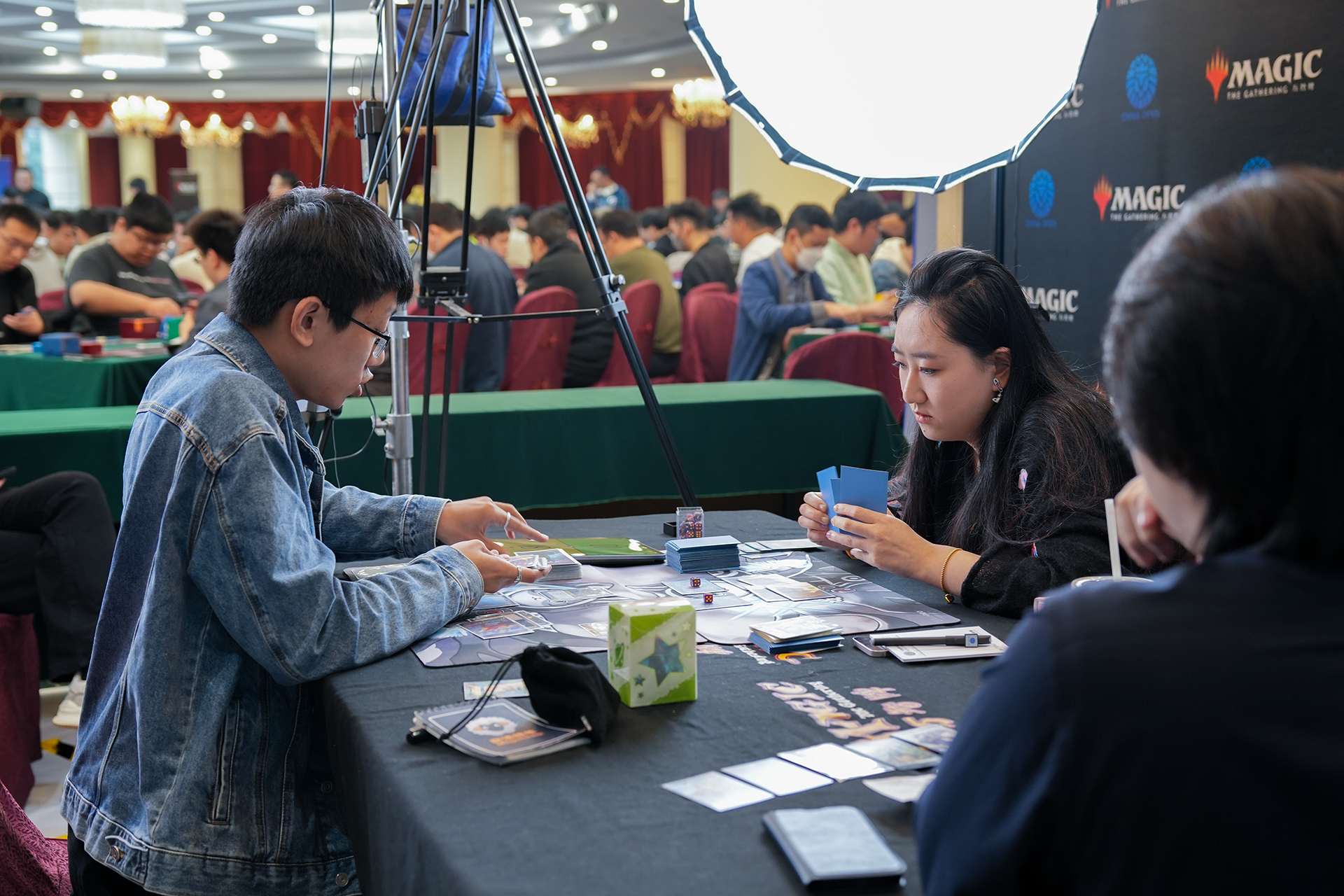The Golden Age of Arcade Video Games came during the 1980s; mostly thriving in the US and Japan. It wasn’t until the 1990s, however, that arcade gaming would come to China. Out of fear that the games were corrupting the youth, arcades in China were banned in the year 2000; but in 2009, that ban was lifted.
Today, there aren’t many hardcore arcades left. Much of the arcades that you’ll see now have newer machines and have a heavy focus on virtual reality games. One of the last of these hardcore arcades in China is Liehuo (烈火), Shanghai’s most famous arcade (and probably the best-known in all of China).

Interior at Liehuo
Boasting several rooms full of classic arcade titles, Liehuo is a historical site, and a necessary pilgrimage for any avid arcade explorer. Being one of China’s gaming headquarters for casual players and competitive masterminds alike, Liehuo has been able to actively preserve arcade culture for decades.
Liehuo’s titles run the gamut of well-known classics such as Time Crisis, Metal Slug, Street Fighter II, and a ton of King of Fighters cabinets. There’s also a thriving contingent of gamers who come to play music games like EZ2DJ and Dance Dance Revolution.
When compared to the great players in other countries like Japan and South Korea, China’s esport athletes and arcade savants have not received the amount of press from international publications as they probably should, but esports and arcade discourse in China is beginning to open up.
At Liehuo we met with some of the arcades’ most passionate players.
Xu Xuelai is 35, from Nanjing, and treats his play as his full-time job. He’s an incredible EZ2DJ player with startling reflexes and focus. EZ2DJ is a rhythm game and DJ-simulator. Players press buttons on a turntable and stomp a pedal in-sync with the game’s music, which is then displayed on-screen. The game was first released in 1999 and is very difficult, so inexperienced players tend to avoid it. Xu is so good at the game that he streams his game performance using a smartphone, his hands moving about, pressing all the buttons in a blurred frenzy.

Xu Xuelai at Liehuo
“I first learned about Liehuo around 2004. For whatever reason, I met a ton of fellow gamers online all of a sudden,” Xu tells us. “And they told us about this place. They said Liehuo’s machines were really good. Back then, Liehuo was still the same as it was in the ‘90s. And it’s still like that today. Seriously, if one day, Liehuo applies to become a site of Shanghai’s cultural heritage. I won’t feel one bit surprised.”
Another player we met, Yang Dong’er, is an art teacher. He’s beloved by his students for his easy-going personality, but once he puts a token in for the rhythm game Taiko, (which uses Japanese Taiko drums) he enters an incredible flow-state, following the on-screen patterns to perfection.

Yang Dong’er at Liehuo
Yang speaks to the prevalence of claw arcade machines in China, something which has become a lot more common since the country’s rapid commercialism and development. These arcades provide a challenge to old-school arcades like Liehuo, but their presence also shows why Liehuo is so unique in modern China.
“Think about the arcades that have branches everywhere. Most of them rely on the claw machines, and similar machines, in order to make a nice profit,” Yang opines. “They don’t really invest much into music game machines… they feel that music games don’t make money. They don’t feel the incentive to update the machines for us.”
The arcade scene has gone through many challenges over the past few decades. Not just in China, but in countries all over the world. Economic recessions paired with global pandemics certainly had a profound effect on retail and social spaces in cities everywhere.
One way arcades in China try to stay innovative is by allowing players to bring their own “set-ups.” (otherwise known as gaming consoles, which are more portable and can play the newest and most updated competitive titles). In this way, venues like Liehuo can operate as a hub for top competitive players to hone their skills so they’ll be ready to compete on the world stage.
Related:
 Female Esports Clubs in China: MOBA Meets K-Pop Meets Cosplay as Players Battle for ParityFacing gender discrimination, female esports professionals turn to other forms of e-celebrity to boost their career prospectsArticle Sep 02, 2019
Female Esports Clubs in China: MOBA Meets K-Pop Meets Cosplay as Players Battle for ParityFacing gender discrimination, female esports professionals turn to other forms of e-celebrity to boost their career prospectsArticle Sep 02, 2019
UYU (one of the most popular global esports brands with players from the US, Japan, and South Korea) recently announced that they would be sponsoring DingChunQiu (also known as “DCQ”) as the official “UYU GO” sponsorship recipient.
With this rare achievement, DCQ will represent Shanghai and UYU at the Intel World Open “East Asia” Regional” Tournament, an international event that’s held before the 2020 Summer Olympics and which highlights two games, Rocket League and Street Fighter V. DCQ will compete in Street Fighter V: Champion Edition (2020).
When we ask about the popularity of Chinese talent in esports compared to the popularity of those from other countries in Asia, DCQ says:
“There are many great players in China, and I think they are not inferior to some world-famous players. However, due to network problems and the lagging development of esports, many players do not get the opportunity to compete abroad.”
He continues, saying, “Even online battles are a luxury; so many players that should be famous are not so. However, many well-known foreign players have fully recognized the strength of Chinese players after competing against them.“
Without a doubt, there have been difficulties and challenges in developing the arcade scene in China, but one thing is for sure: Casual enthusiasts, pro players, and legendary venues are all working to preserve what is left of the scene. China wields strong and creative talents, and as publications become more and more aware of this, the boundaries that exist globally in gaming and esports are continuing to dissolve.
Arcades transcend their ability to provide us entertainment. Arcades are relics of history. They are the keys to a forgotten past, as well as to an exciting future. A future where China’s legacy of gaming and arcades is cemented in global consciousness.
All images by Miranda Wang and Thanakrit Gu















